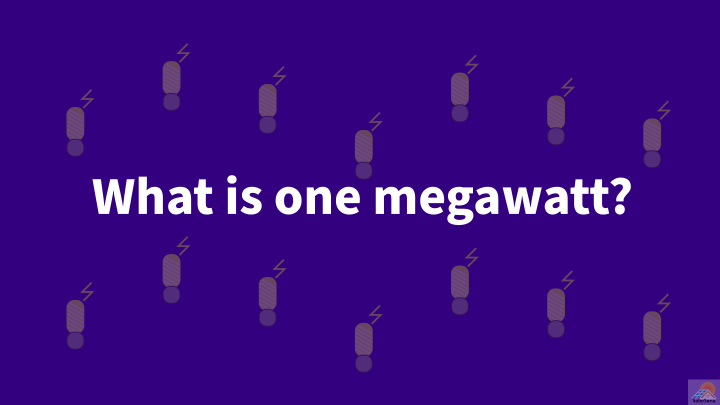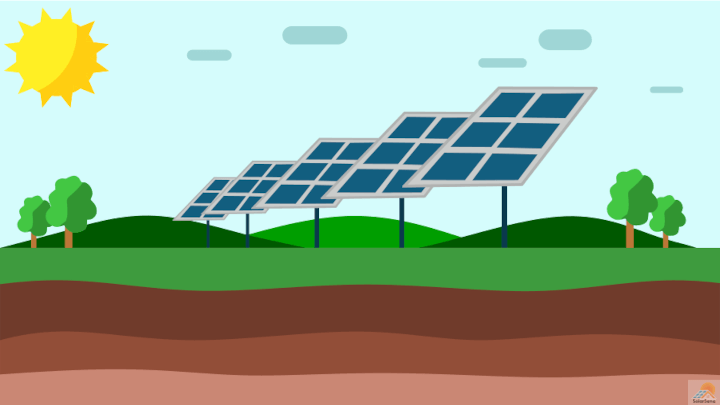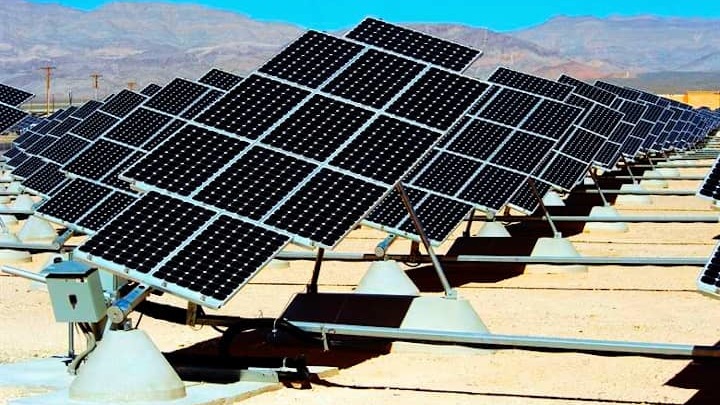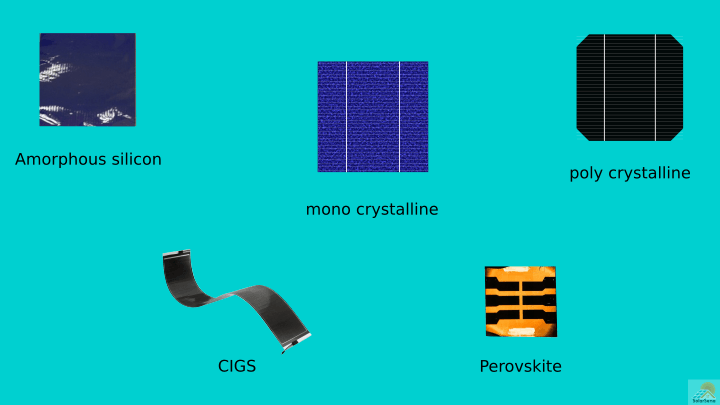We usually see the word “megawatt” in the news media content and reports, particularly when the content has anything to do with electricity and energy. For example, the Ivanpah Solar Power Facility in Nevada, one of the largest solar thermal power plants, has a capacity exceeding 390 megawatts. This number is very big but how big. What does one megawatt mean? To get some practical sense of how big a megawatt is, we might need to acquaint ourselves with the megawatt.
What is a megawatt?
A megawatt is a derived unit of power and equal to one million watts. The megawatt is a very useful unit and helpful when defining bulk power usage. The prefix “mega” means one million, so one megawatt is one million watts. “MW” symbolizes the megawatt.
1 MW = 1 000 000 W
The megawatt is a standard unit of power. And power is the amount of work done per unit time. Thus, the number of megawatts always represents the energy spent or produced per second.
One watt (1 W) is equal to one joule (1 J) per second. Here, the joule is a unit of energy.
1 W = 1 J/s
From the above, we can say one megawatt is also equal to one million joules per second.
1 MW = 1 000 000 W = 1 000 000 J/s
When we say the Ivanpah Solar Power Plant has a capacity exceeding 390 MW, it means the plant has a capacity to produce more than 390 million joules of energy per second.
Practical examples
In practice, the megawatt is used when referring to the power requirement of medium-to-big commercial projects, utility power plants, and industrial work. The energy needs of a normal individual consumer will never exceed one megawatt.
To better understand the megawatt, here are some practical examples.
1 MW = 25000 laptops
Typical laptops consume 15 to 45 W on active screens. Taking 40 W, we would need 25000 laptops to reach one megawatt of power requirement.

1 MW = 3300 solar panels
Solar panels generally have wattage between 250 W and 400 W. We would require around 3300 solar panels, each rated at 300 W, to give peak production power close to one megawatt.

1 MW = 1000 American homes
On average, an American utility consumer uses 1.2 kW of electricity. So, it would take roughly 1200 American homes to reach 1 MW. Thus, one megawatt of produced electricity can power more than one-thousand American homes.
Every state has different energy needs. For example, residences from southern US states draw more power from utility grids than northern. Therefore, our definition that one megawatt is an electric supply to one-thousand American homes is valid on an average basis. Depending on what state you live in, the average electric power consumption per thousand consumers in your region can be higher or lower than one megawatt.
A long haul flight > 100 MW
A Boeing-747 plane typically burns 150 000 liters of fuel in a 10-hour flight. Assuming the energy density of 35 MJ/L of fuel, the airplane consumes 140 MW of power. So, the next time you go on a long-haul flight, your plane may have consumed power exceeding 100 MW before you reach the destination.

Google’s data centers > 260 MW
Google is an internet monolith. Every time you google a search query, send a Gmail message or watch a YouTube video, you use the company’s resources, which are stored in its data centers. It’s data centers draw over 260 megawatts of power—it is more than half of the capacity of the Ivanpah Solar Power Facility.

Megawatt (MW) vs Megawatt-hour (MW h)
The megawatt and megawatt-hour are similar terms; however, both represent different qualities. The megawatt, as explained earlier, is a unit to measure power, whereas the megawatt-hour (MW h) is a unit to measure energy. Power and energy are different but related by time. Power is energy per unit time. It is like distance traveled and speed, i.e., distance traveled per unit time.
When we say one megawatt, it means we are talking about power, energy per unit time. On the other hand, one megawatt-hour represents only energy. The former is analogous to speed (distance per unit time), and the latter is like distance traveled.
Megawatt-hour (MW h) is defined as the amount of energy spent when a 1 MW appliance runs for one hour.
1 MW h = 1 MW × 1 h = 3.6 × 109 J
When a solar array that has 1 MW of rated power capacity operates at its peak for one hour, it will produce 1 MW h energy during that time.
Conversions
Megawatt (MW) to watt (W)
As mentioned earlier, one megawatt is one thousand thousand watts.
1 MW = 1 000 000 W
Megawatt (MW) to kilowatt (kW)
One megawatt is equivalent to one thousand kilowatts.
1 MW = 1000 kW
Megawatt (MW) to gigawatt (GW)
One megawatt is one-thousandth of one gigawatt.
1 MW = 0.001 GW
Megawatt (MW) to horsepower (hp)
One megawatt is one-million seven-forty-sixths of one horsepower.
1 MW = 1000000/746 hp



